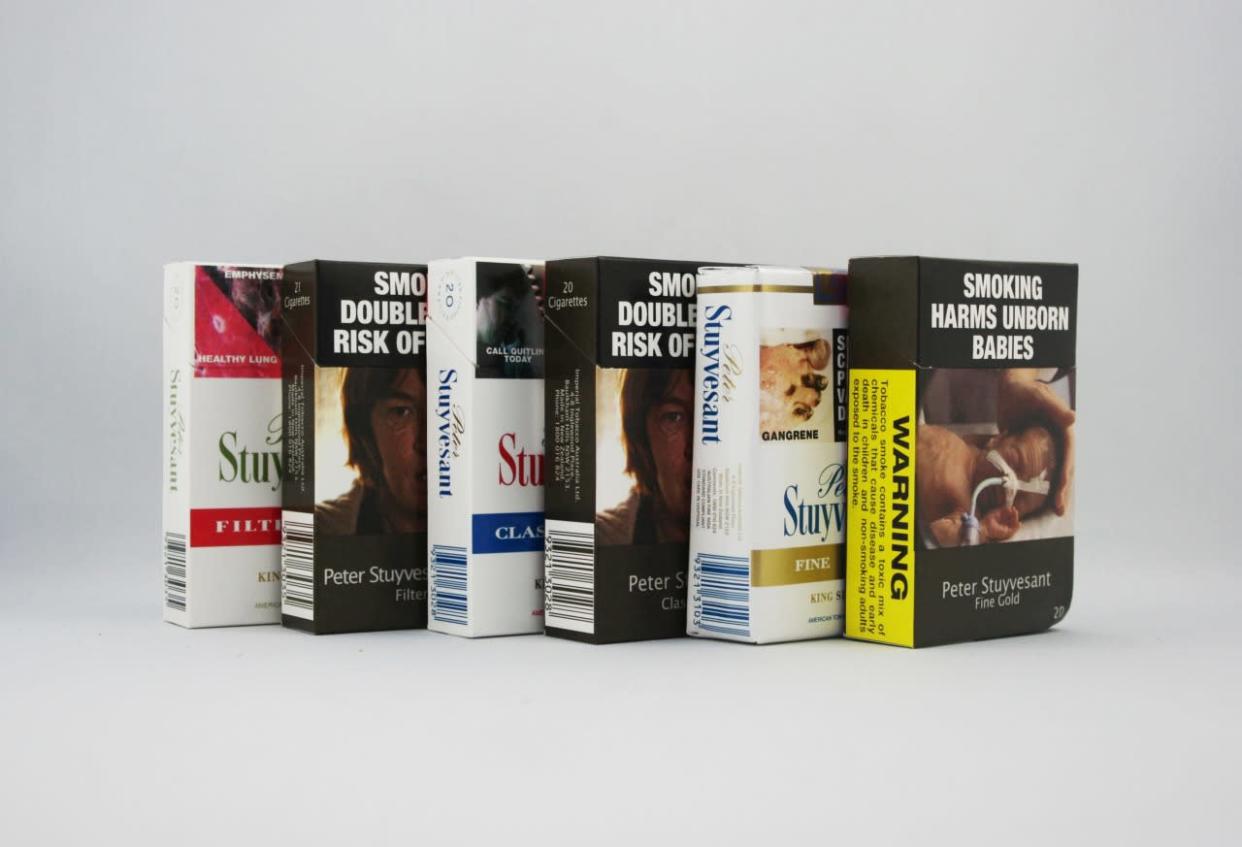 Daily Brew
Daily BrewPlain packaging may be coming to Canadian cigarette packs

[Cigarette companies in Australia began carrying plain packages in 2012, and Canada could be following suit soon. PHOTO: David Hammond]
It has earned the unfortunate moniker of “fecal brown.”
In May, the United Kingdom began to require all cigarettes be marketed in the same, plain packaging, which studies determined to be, basically, the ugliest colour in the world.
And Canada will likely be next. The federal government has made it clear that it will introduce legislation for plain packaging of tobacco products, following suit with Australia, the U.K., Ireland and France.
A consultation period will end next month and legislation is likely imminent.
“I think you can expect Canadian packages to look very similar,” says David Hammond, a researcher at the University of Waterloo’s School of Public Health who has studied extensively tobacco marketing around the world and who has served as an expert witness in lawsuits over plain packaging in Australia, Ireland and the U.K.
The purpose of plain, or standardized, packages is to reduce the appeal to kids and specific sub-groups, for example “slims” for women.
“Brand imagery is one of the most reliable ways of targeting certain brands at women. We, in Canada right now, have a brand called Vogue Superslims and it has pink flowers on it. That’s a great way of saying that this is a female cigarette and those are effective says of tailoring brand imagery at certain sub-groups,” Hammond says.
Plain packaging also helps to reduce the belief that some brands of cigarettes – such as low-tar or light cigarettes – are less harmful than others.
“There is no difference in risk. In fact, if anything, light and low-tar cigarettes are more harmful than regular cigarettes,” he tells Yahoo Canada News.
Companies in Canada are banned from using the words light or low-tar on packaging, “so they took those words off but they still use colour coding to tell people which is the so-called light cigarette and it’s very reliable across the world,” he says.
Third, it makes the health warnings more noticeable and it removes any distracting information, Hammond says.
Australia introduced plain packaging in 2012. The U.K.’s legislation came into effect last May and Ireland’s a little over a year ago.
In each case, the tobacco industry brought lawsuits.
Jeff Guiler, spokesman for Imperial Tobacco in Canada, says the company is still working on its submission to the federal government consultation, which ends Aug. 31.
“Obviously we’re opposed to plain packaging just because it looks like more of a PR stunt than anything that’s going to be grounded in results,” he tells Yahoo Canada News.
“In Canada, cigarettes are already hidden from public view. On the flaps, we have 75 per cent [coverage by] health warnings. We don’t believe that plain packaging, taking away the small portion of the pack that’s left for branding, is going to do anything.”
In Australia, Guiler says plain packaging has not had any impact on accelerating smoking decline. It has, though, increased illicit trade in tobacco products.
“Nobody starts smoking today because of the pack. How is taking away the little bit that’s left for branding going to do anything to help the health of consumers?” Guiler says.
“At the end of the day this is driven by a small but vocal minority of public health advocates who seem more intent on being anti-industry than pro-health.”
Hammond disputes the claim that packaging has not curbed Australian smoking. In combination with higher taxes and new health warnings, statistics show Australia has seen its biggest-ever decline in smoking since the plain packaging went into effect in 2012.
“The only people saying it didn’t work are those being paid by [tobacco] companies,” he says.
Imperial Tobacco wants to see the legislation first but it is prepared to fight the legislation in the courts.
The federal government has no legislation to address e-cigarettes or marijuana, he points out.
“Like any industry, we’re going to defend our rights to use our brands and use our trademarks, if it comes down to that,” he says.
On World No Tobacco Day May 31, the World Health Organization repeated its appeal for member nations to implement plain packaging.
“Plain packaging reduces the attractiveness of tobacco products. It kills the glamour, which is appropriate for a product that kills people,” says WHO director-general Dr. Margaret Chan.
Hammond says the federal government should expect legal action from the industry.
“These lawsuits are partly intended to just serve as a deterrent to other countries,” he says. “They’ve lost every case that they’ve brought so far. I can’t see how it would be any different in Canada but part of this is to discourage other countries from even taking the step of doing it.
“They’re still suing our government right now over the health warnings on packages.”


